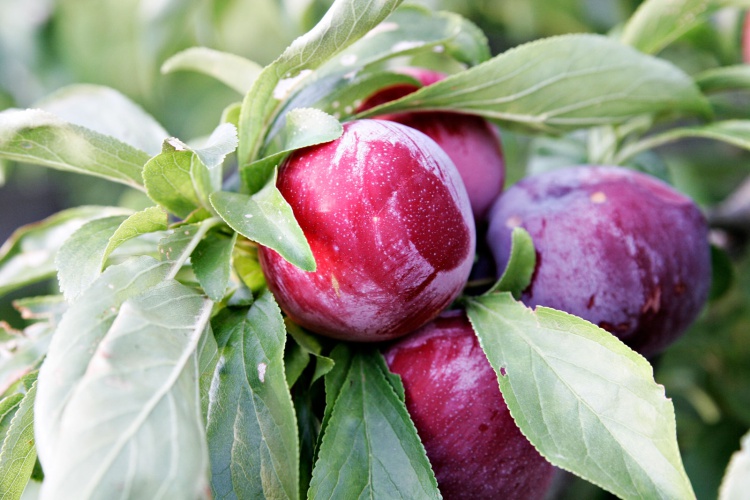Plum pests and diseases and their treatment in pictures
Content
How to get rid of red spot
Red spot, and scientifically, polystygmosis is a fungal infection of plum leaves. Light yellow and orange spots begin to cover them. With the development of the disease, the spots become bright red, dense and with a characteristic shine. Polystygmosis leads to shedding of the ovaries.
Various fungicidal agents are used to treat trees. In early spring, the garden (including the soil) is treated with a solution of Nitrofen. For 10 liters of water, you need to take 300 grams of the drug. Copper sulfate is also used for spraying. Immediately after flowering, you can treat the plum with Bordeaux liquid at a rate of 100 grams of product per 10 liters of water.
To prevent the red spot from returning, remove the remnants of fallen leaves in time. It is with them that the disease spreads and continues to attack the plums. Also, do not forget to loosen the soil in the near-stem area.
How to cure plum dwarfism
Plum dwarfism is a serious viral disease that adversely affects all parts of the plant. The first signs of the disease appear on the leaves. They grow smaller and narrower. Especially a lot of deformed leaves are formed at the tops of the shoots. Their edges are uneven and the color is dull. Flowers are rare and also painful. The virus leads to a slowdown in the overall growth of the tree and premature aging.
Unfortunately, infected trees cannot be treated. They must be uprooted and burned away from the garden. All the proposed methods of control are used rather for prevention. First of all, choose varieties that are resistant to the virus. The least adapted in this regard are Renklode Zeleny and Renklode Italian. Also carry out timely insect sprays, since it is the sucking pests that spread the disease. If you find a diseased tree in your garden area, observe quarantine measures (disinfect tools, wear change of clothes).
Video "Diseases of stone fruit"
How to remove pockets
Plum diseases also affect the fruit. One of them is called pockets or marsupial disease. Plums affected by the fungus grow in a baggy shape. A bone does not develop in them. Fruits can reach 5-6 centimeters in length, but be thin. A whitish bloom forms on top of the peel. In general, fruits do not ripen normally and become unusable. If the disease is not noticed in time, then crop losses from can reach 60%.
To keep the pockets from growing, it is important to keep an eye on the trees, especially in the first weeks after flowering. To combat the fungus, spraying with Bordeaux liquid is used in early spring before the formation of the first buds. After flowering, treatment with 1% fungicide solutions can be carried out. Before and after flowering, trees are sprayed with Horus in a proportion of 2 grams per 10 liters of water.
Sick fruits and shoots cannot be ignored. They are collected and destroyed by burning. It is important to remove deformed plums from the tree before they appear white for summer.It is worth noting that the pockets attack trees especially in wet weather.
What to do with the plum ball
Sharka or plum pox attacks the leaves. Their surface is covered with chlorotic annular spots, which are especially prominent in the lumen. From the side, the leaf looks like marble. Also, the disease attacks the fruit. Plums become dense, the ripening process is accelerated, deformations are noticeable on the peel. The pulp acquires a brownish-red hue and loses its taste.
Sharka is caused by special viruses. To combat them, drastic measures are needed. Diseased trees must be uprooted and burned immediately so that the disease does not spread to other plants. It is also important to observe quarantine precautions. You can protect yourself from smallpox by choosing resistant varieties of plums - all types of Renklods. Poor stability is noted in Mirabelle Wangangheim, Zimmer and Nancy.
Video "Diseases of cherry and plum"
The most common cherry and plum diseases affecting these trees, leaves and their fruits are described in the video below.



